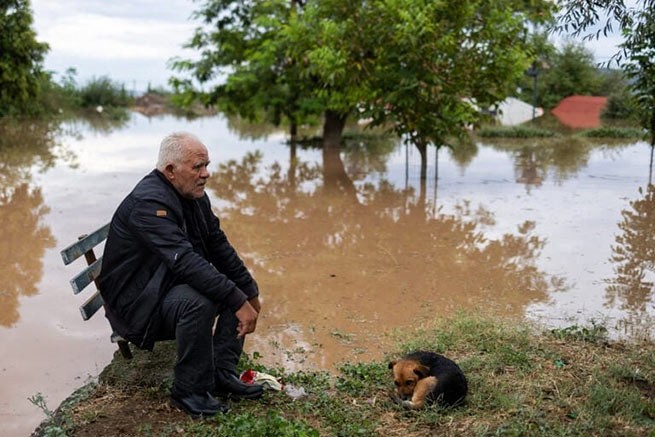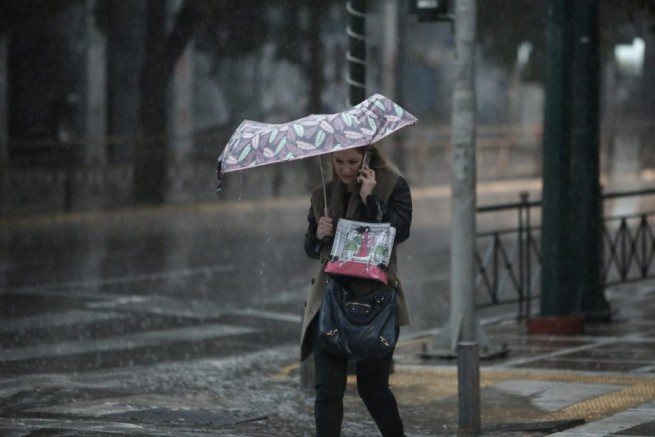On Thursday, the Department of Environment and Energy of SYRIZA-PS published a report assessing the real incremental profit in the electricity market for the period from July 2021 to March 2022.
As stated in the introduction to the report, it calculates “windfall” or “unexpected” profit, which occurs mainly for renewable energy sources, as a surplus of the special account ΑΠΕ (ΕΛΑΠΕ) for the entire period under review. As of July 2021, the ceiling price of the system in the day-ahead market was significantly higher than the weighted average offset price of RES projects in the interconnected system.
The purpose of the foregoing is, on the one hand, to show the distortions and failures in the operation of the wholesale electricity market, and on the other hand, in contrast to the incomplete calculation of the excess profits of the RAE, the correct and fair calculation of the excess profits that must be recovered during the disputed period of time in order to they could be returned to consumers. At the same time, from an estimate of “strong growth” in renewable energy profits, which, according to an official report, ΔΑΠΕΕΠ Α.Ε., resulted in a surplus in ΕΛΑΠΕ, which is returned as a subsidy to consumers. Part of the surplus (780+320=€1,100 million) has already been set aside to be returned to the statutory Energy Transition Fund.
This report assesses windfall profits in the power generation (and supply of photovoltaic modules for power generation) sector by technology, as well as skyrocketing (windfall) profits for government-supported RE plants from July 2021 to March 2022.
With regard to income from electricity generation:
- For the period of expertise (July 2021 – March 2022), it is estimated at 1,703 million euros (Table 2) against 927 million euros of the RAE conclusion. This does not take into account excess profits of around €110 million estimated to be the result of electricity imports during the disputed period. It should be noted that this amount (110 million euros) is mainly related to commission activities, which are unprofitable during this period (otherwise, the excess profit exceeded 1,800 million euros). The aforementioned amount of 1,703 million euros must be taxed in order to return at least 90% to consumers. It is based on an estimate of the total cost of producing units.
- Under the rules of market unbundling, the removal of any subsidies or discounts from vertically integrated electricity producers to retail consumers is not justified. Firstly, because it is a cross-subsidization (and a violation of the basic rules of competition), since this is a commercial supply policy, and, above all, because non-vertically integrated suppliers are strangled in this way, which generally incur losses during the period of verification. And secondly, because these discounts are not entirely real, since in each invoice, after the supposed “discount”, an adjustment clause is added, which, based on the tariffs chosen by the suppliers, translates the additional wholesale cost into addition and, thus, exceeds /neutralizes any meager “discounts” referenced by vendors.
- In the meantime, one and a half months after the adoption of the law institutionalizing the process of taxation of surplus profit for the half year from October 2021 to March 2022, and also thereafter until June 2022 (Law 4936/2022, Official Gazette A ‘ 105/27.5. 2022, art. 37), the taxation of excess profits has not yet advanced. The necessary recommendation of the RAO on the issuance of the prescribed CSC, which determines the methodology for calculating the excess profit, has not been made public, the specified CSC has not been issued, and, of course, the correct recalculation of the amount of excess profit, the elimination of distortions and non-standard approaches and calculation procedures, which included the initial withdrawal to the RAE, have not been made, and the amount to be taxed has obviously not yet been determined!
Regarding the rapid growth of RES profits:
This report estimates the skyrocketing profits for the period July 2021 to March 2022 at €0.8 billion, with the vast majority of it going to the special renewables account.
The above amounts, with a temporary delay and in the form of a subsidy, have been provided or are to be provided as a subsidy to consumers through the Energy Transition Fund without specifying all the criteria of the new subsidy model. However, at the same time, charging consumers through ETMEAR to finance ΕΛΑΠΕ continued without any significant changes, with the result that the benefits to society and the economy as a whole became much less. The current policy of subsidizing excess revenues, collected from consumers themselves and not from the state budget, is an idiosyncratic redistributive tax policy that does not meet the basic constitutional imperatives of proper taxation. In addition to the windfall and skyrocketing growth in renewables, it is noted that ETMEAR fees (up to 600 million euros) as well as YKO fees are charged to consumers without the corresponding costs of covering them. In the case of YKO fees, an excess is created due to the interconnection of the islands. Instead of lowering HYO fees due to interconnection, consumer fees remain unchanged and the surplus created in the HYO special account is transferred to the Energy Transition Fund for redistribution later as a subsidy.
With regard to windfall profits from natural gas supplies:
As a result of ΡΑΕ’s decision for ΔΕΠΑ, even after subtracting amounts relating to 2021 (arbitrage income with BOTAS and take-or-pay clause for 2021), a profit of 200 million euros was made, which is the result of importing and reselling photovoltaic installations in the country and mainly in power generation, confirming, in the part where DEPA supplies photovoltaic units, the presence of an integrated variable cost of the said power generation units mentioned in Table 2, and are the result of the difference between import VAT prices in the country and prices, used to declare variable costs in the market before the day.







More Stories
Flood victims in Thessaly will pay property tax (ENFIA)
Fines of 1.5 million euros for 11 large retail chains, including Leroy Merlin, Attica and JYSK
Reuters reveals what the Mitsotakis government doesn't want to talk about: “Huge debt – low wages”